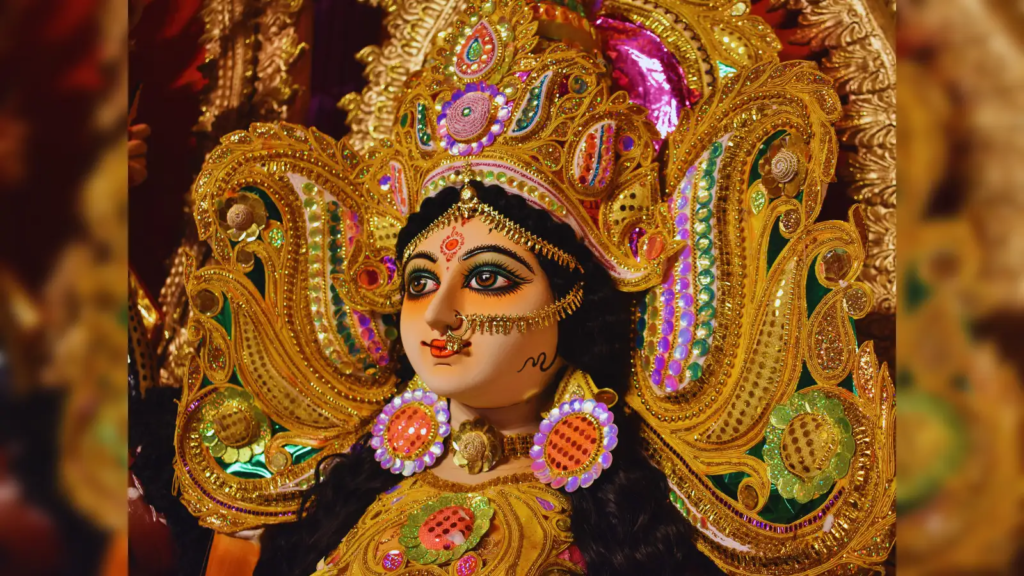
Table of Contents
- Introduction: When Spring Meets the Divine
- What is Chaitra Navratri?
- Mythological Roots: A Tale of the Divine Feminine
- The Nine Days: Symbolism and Power
- Spiritual Significance: Inner Awakening
- Rituals and Observances: A Sacred Rhythm
- Chaitra Navratri vs Sharad Navratri
- The Harvest and the Heart: Why This Season Matters
- Conclusion: A Festival That Awakens More Than Devotion
1. Introduction: When Spring Meets the Divine
As the golden sun warms the earth and new leaves stir in the breeze, India prepares to welcome a festival that is both ancient and deeply spiritual—Chaitra Navratri. This is not just a celebration; it’s a sacred invitation to reconnect with the inner self, guided by the divine energy of Goddess Durga.
2. What is Chaitra Navratri?
Observed during the Chaitra month (March–April) according to the Hindu lunar calendar, Chaitra Navratri marks the beginning of the New Year in many parts of India—especially in states like Maharashtra (Gudi Padwa), Andhra Pradesh, and Karnataka (Ugadi). These nine days are dedicated to worshipping the nine forms of Goddess Durga, each day representing a different aspect of feminine power (Shakti).
3. Mythological Roots: A Tale of the Divine Feminine
Chaitra Navratri finds its origins in the story of Lord Ram. According to legend, he invoked Goddess Durga for nine days before his battle with Ravan. This period of worship symbolizes the power of dharma (righteousness) over adharma (evil). It is also believed that the Goddess herself descended to earth during this time to destroy Mahishasura, the demon king. This sacred cycle reminds us of the eternal victory of good over evil, not just in the outer world but also within ourselves.
4. The Nine Days: Symbolism and Power
Each day of Navratri is linked to a specific avatar of Durga—from Shailputri, the embodiment of strength, to Siddhidatri, the goddess of wisdom and completeness. Devotees fast, chant mantras, wear symbolic colors, and perform rituals that correspond to each goddess:
- Day 1: Shailputri – Root strength and grounding
- Day 2: Brahmacharini – Tapasya and devotion
- Day 3: Chandraghanta – Grace and courage
- Day 4: Kushmanda – Cosmic creativity
- Day 5: Skandamata – Motherly nurturing
- Day 6: Katyayani – Fierce protector
- Day 7: Kalaratri – Destruction of darkness
- Day 8: Mahagauri – Radiance and purity
- Day 9: Siddhidatri – Divine completeness
5. Spiritual Significance: Inner Awakening
Chaitra Navratri is more than external celebration—it’s a call to introspection and purification. Fasting is not just about abstaining from food; it’s about detoxifying the body and mind. Chanting, meditation, and prayer create space to connect with one’s higher self. Each day becomes a step on the ladder of spiritual growth, peeling away ego and illusion, moving closer to inner light.
6. Rituals and Observances: A Sacred Rhythm
Homes are cleaned, altars are set, and lamps are lit to welcome divine energy. In many households, people perform Ghatasthapana, a ritual of invoking Durga by placing a clay pot symbolizing creation. Devotees observe kalash puja, read the Durga Saptashati, and sing hymns in praise of the goddess. On the eighth or ninth day, Kanya Pujan is performed, where young girls are revered as manifestations of the goddess herself.
7. Chaitra Navratri vs Sharad Navratri
While Sharad Navratri (held in September–October) is more widely celebrated, Chaitra Navratri holds equal spiritual weight. Sharad Navratri aligns with post-monsoon energy, focusing on Durga’s battle. In contrast, Chaitra Navratri celebrates renewal, marking the arrival of spring, a season of beginnings—both in nature and within.
8. The Harvest and the Heart: Why This Season Matters
Chaitra Navratri coincides with India’s agricultural cycle. As farmers sow the seeds of a new harvest, devotees sow seeds of intention in their spiritual life. This alignment of earth’s rhythm and inner rhythm gives Chaitra Navratri its profound energy. It’s a time to nurture beginnings—of crops, of habits, of spiritual pursuits.
9. Conclusion: A Festival That Awakens More Than Devotion
In a world chasing speed and distraction, Chaitra Navratri invites us to pause, reflect, and awaken to the sacred feminine within and around us. It’s a celebration not just of gods and goddesses, but of life, light, and transformation. Whether you observe it with rituals or with quiet reflection, this festival offers a timeless message—rebirth is always possible, and divine strength lives within us all.

